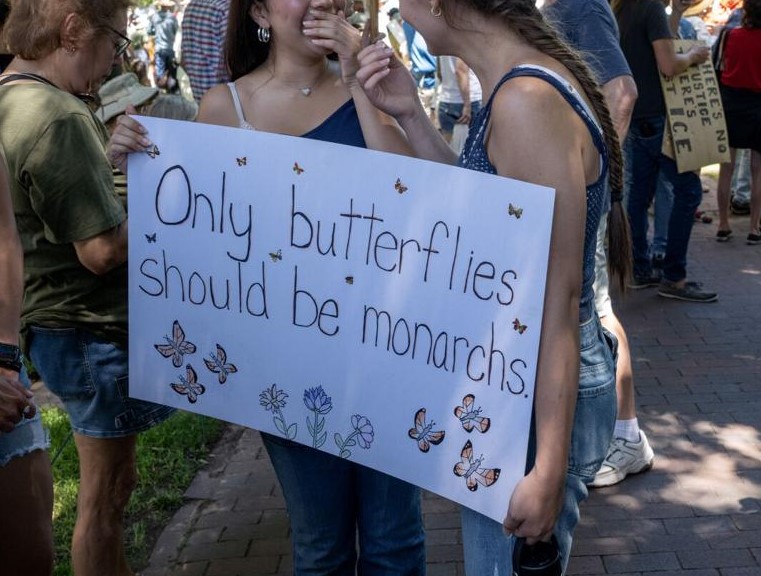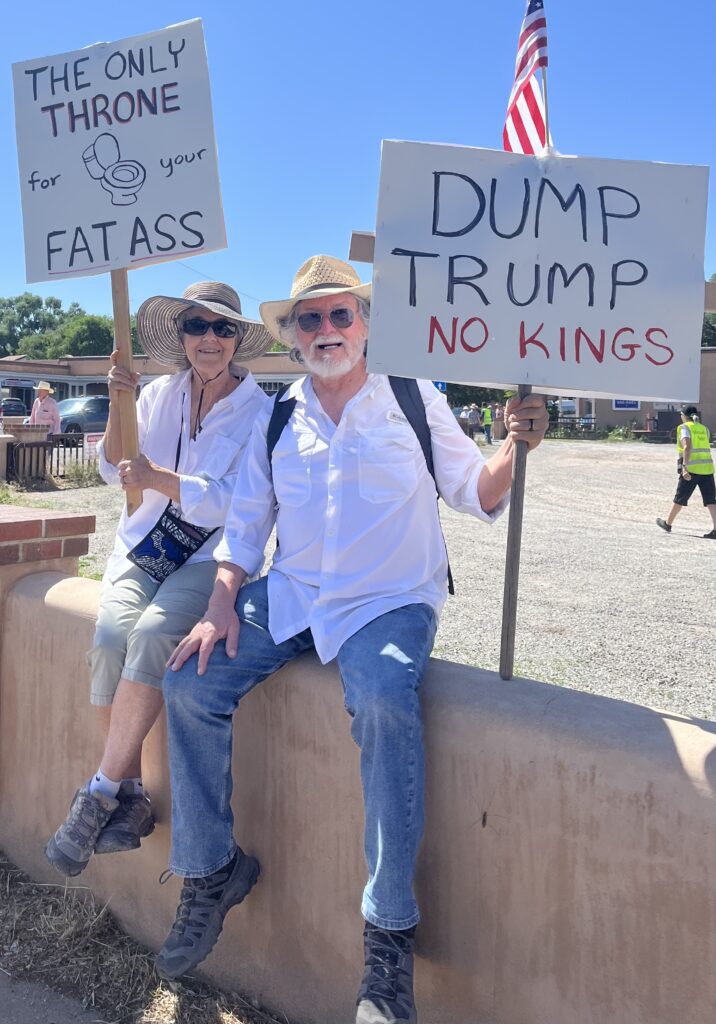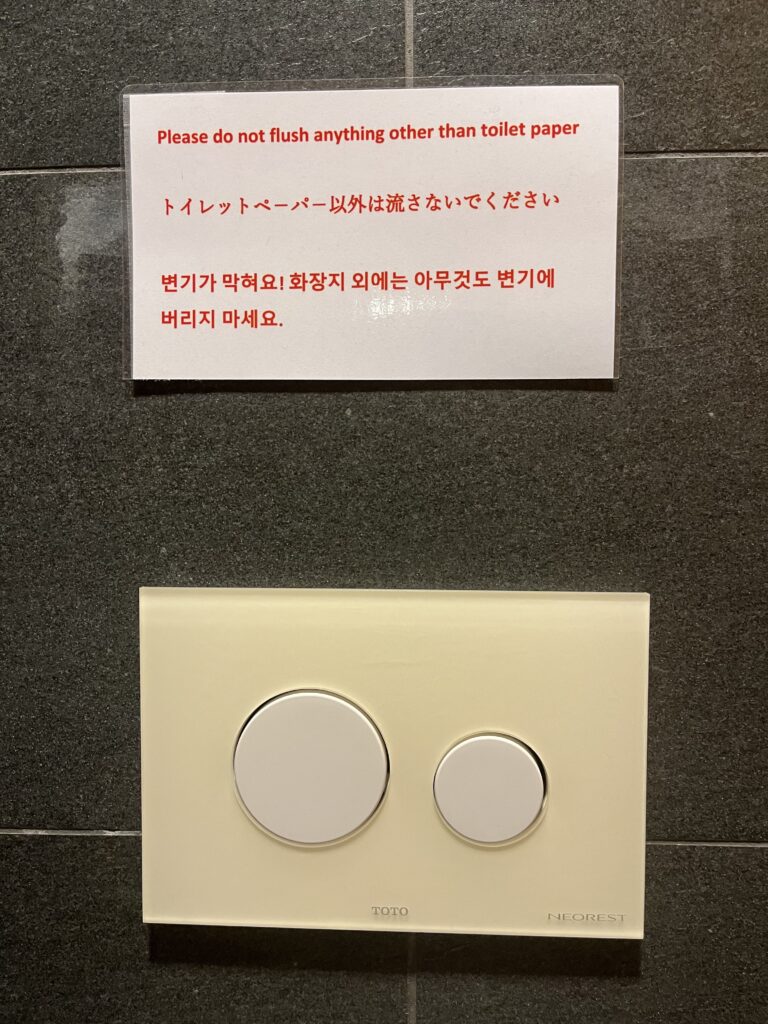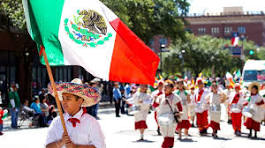Happy Flag Day
Santa Fe, New Mexico, has a population of about 85,000. Yesterday, an estimated 5,000 (almost 6%) came out to celebrate the double holiday — No Kings Day and Flag Day. It also happened to be Trump’s birthday, and a few creative signs did wish him a very unhappy birthday.
There were several remarkable things about the rally, but what blew me away was the fact that there was zero conflict reported among participants or with law enforcement. The crowd was twice what was expected, and the “stay-on-the-sidewalk” march from the state capitol to the downtown plaza broke the rules and flooded the streets. There were citizen security guards who stopped the human flow at intersections every few minutes for traffic to cross. No matter how excited and empowered the crowd was, they obeyed, and so did the cars, waiting for their turn, many honking in support. State police in clusters of 3 or 4 were relaxed and non-threatening. They diverted traffic as needed, and called an ambulance for two people with heat stroke.

This smooth handling of the unexpected speaks to superior organization and coordination led by Indivisible Santa Fe. The program included live music and speakers, including our congressional representative Teresa Leger Fernandez and other officials and community leaders. In addition, anyone from the community who wanted to speak could arrive early and sign up for time at the microphone. These included a 61-year old vet from the Gulf War, a young Hispana born here and wanting to speak for friends and family afraid to speak out, and a young man pleading for understanding across all differences. It was an awesome day. I will let the signs speak for themselves. Thanks to Nancy Dahl for photos.
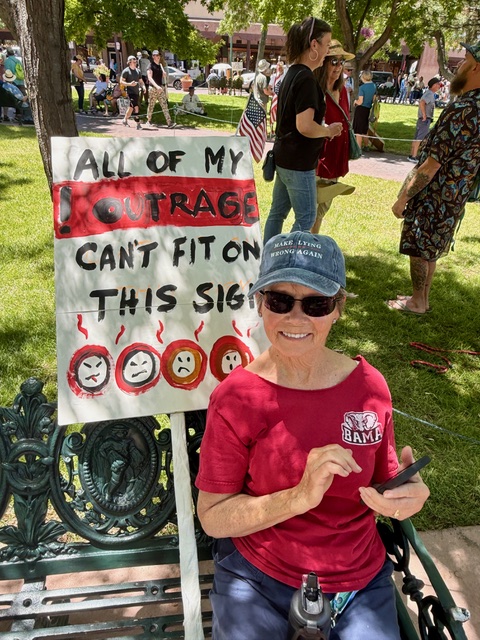
Such creativity and wit!
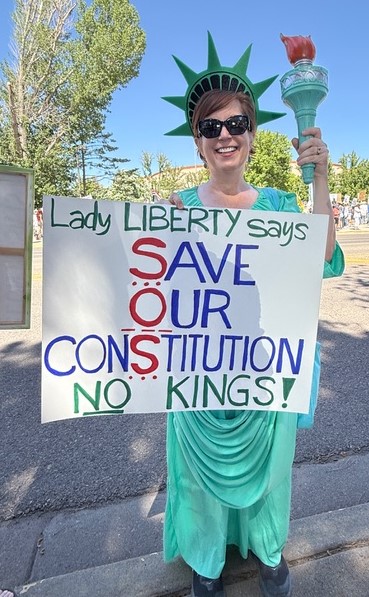
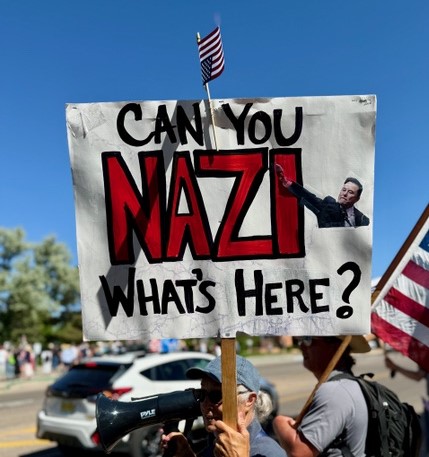
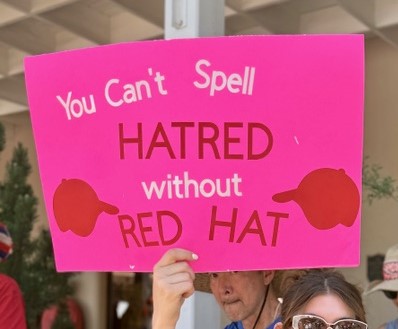



My husband and I were there, with our signs, reflecting our moods. Mine on the crude side; his more restrained.
But here’s my favorite, below — gives me hope.
